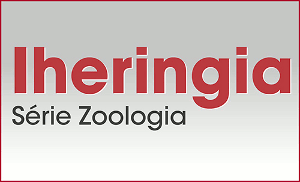The diet and trophic relationships between the macroinvertebrates Phyllogomphoides joaquini Rodrigues Capítulo, 1992 and Coenagrionidae (Odonata), Chironomidae (Diptera), Diplodon delodontus (Lamarck, 1919) (Bivalvia: Hyriidae), and Pomacea canaliculata (Lamarck, 1822) (Gastropoda: Ampulariidae) and the fishes Pimelodella laticeps Eigenmann, 1917 (Heptapteridae) and Bryconamericus iheringii (Boulenger, 1887) (Characidae) in a temperate lowland lotic system in Argentina were assessed on the basis of gut contents and stable-isotope analyses. The feeding strategies were analyzed by the AMUNDSEN method. Relative food items contribution for the taxa studied indicated a generalist-type trophic strategy. In macroinvertebrates, in general, the values of stable isotope confirmed the result of the analysis of gut contents. With the fish, stable-isotope analysis demonstrated that both species are predators, although B. iheringii exhibited a more omnivorous behaviour. These feeding studies allowed us to determine the trophic relationships among taxa studied. Detritus and diatoms were a principal source of food for all the macroinvertebrates studied. In La Choza stream the particulate organic matter is a major no limited food resource, has a significant influence upon the community.
Diet; stable isotope; temperate plain streams









